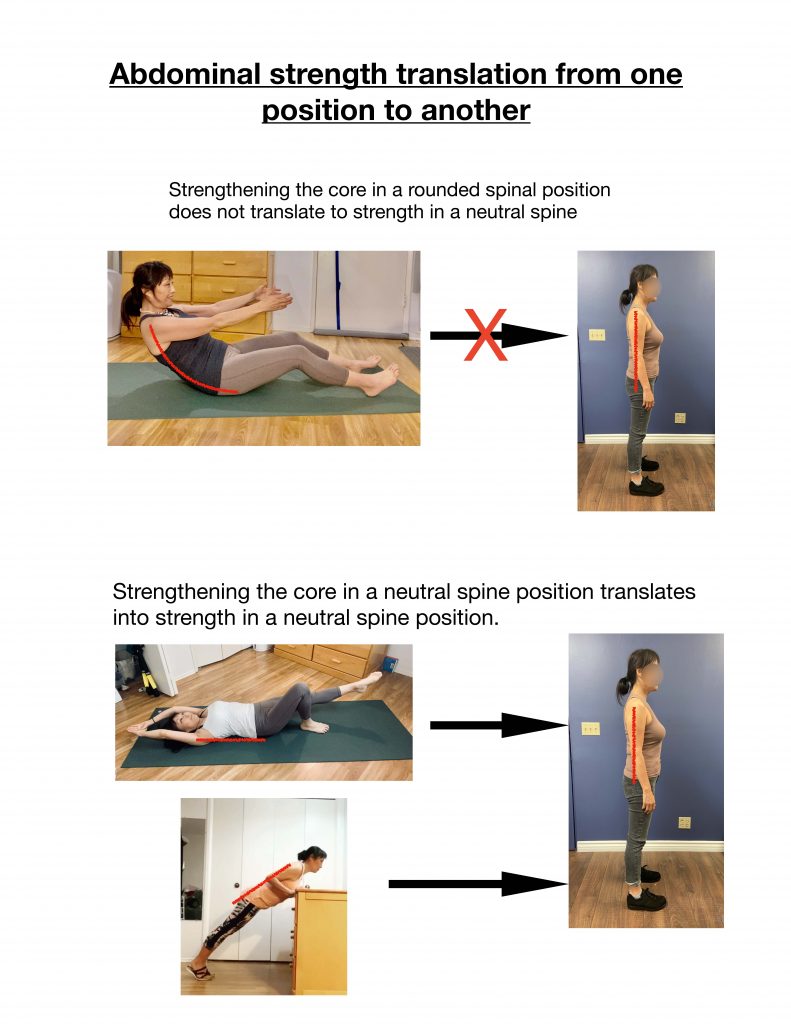Engaging the core in one position doesn’t mean it automatically engages in another. For example, doing a thousand sit ups doesn’t mean the core works standing up straight. That is because in a sit-up the core is in a flexed position whereas in a standing posture, the core is in a neutral, more lengthened position.
The first time I clearly witnessed the inability to translate the core from one position to another was working with patients in a physical therapy clinic. I noticed that even if the student could engage their core in flexion on the reformer laying down, they could not engage it when standing up.
The core needs to be exercised in the position you want it to work in. For example, if you want your core to work for you while lifting your 30-pound toddler in neutral spine, then you need to train the core in a neutral spine, not a rounded flexed back.
The following picture illustrates how a core strengthened in a rounded flexed position does not translate to a neutral position. And how working the core in a neutral position translates to strength in a neutral position.


